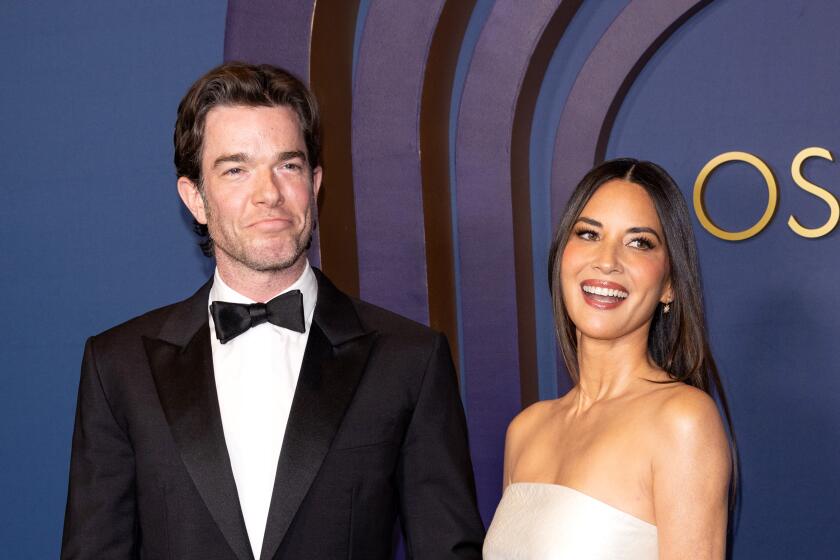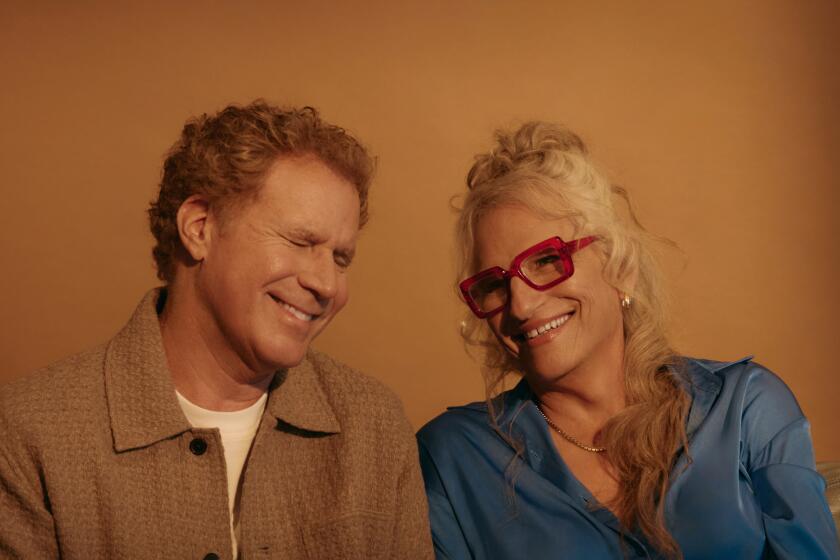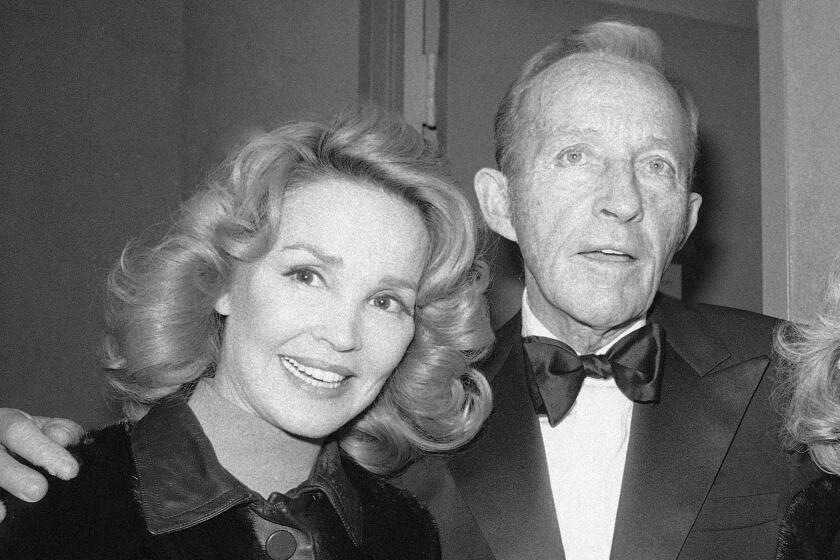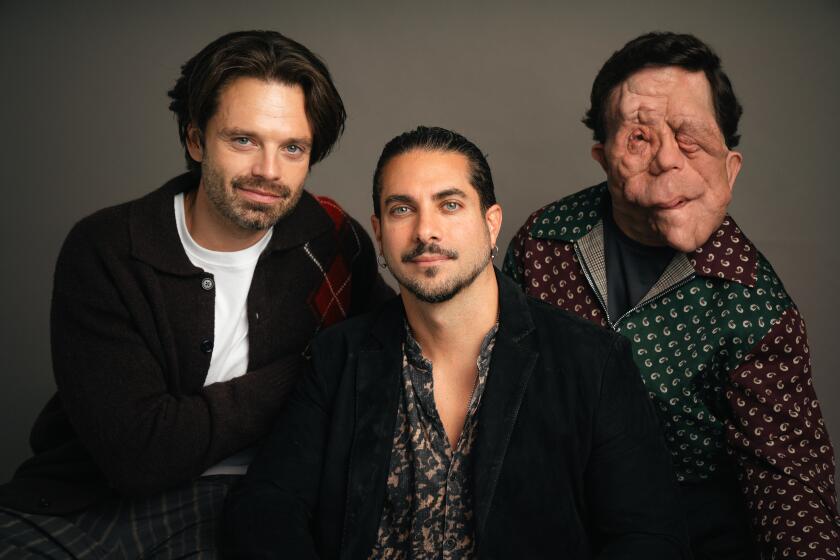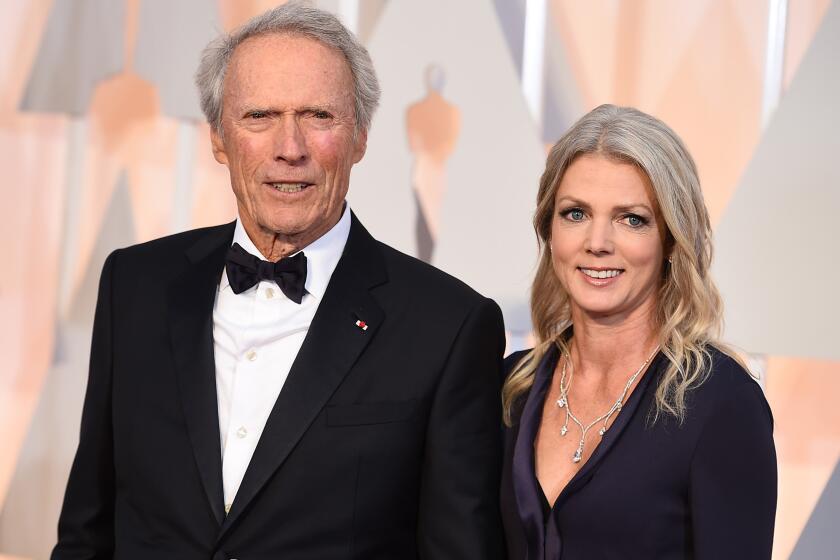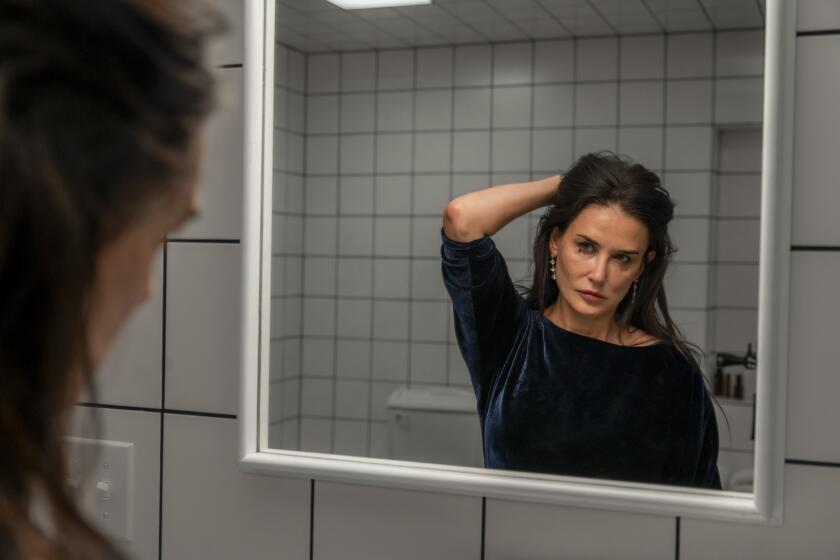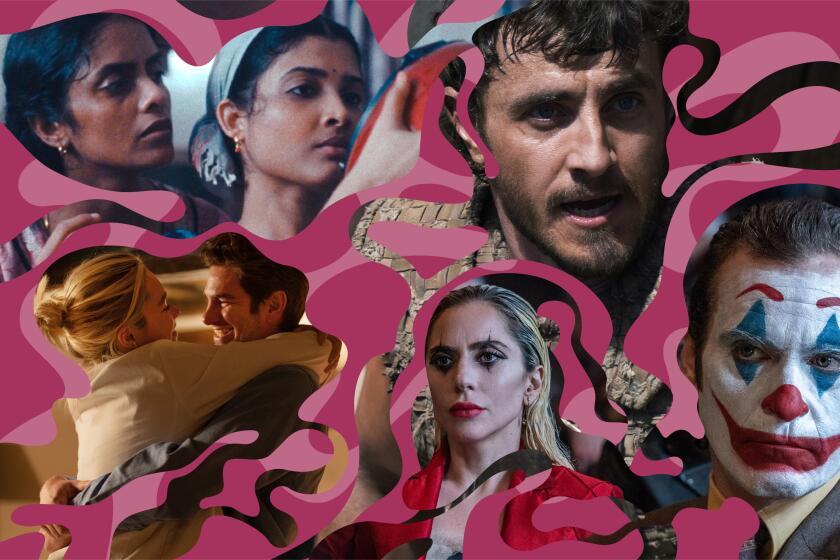Oculus Rift carves out virtual-reality spot in entertainment world
Palmer Luckey, the baby-faced founder of virtual-reality start-up Oculus VR, looked slightly perplexed when asked if he thought his ballyhooed headset, known as the Rift, could change cinema.
“No, not ‘if.’ We will change it,” he said after a pause, sitting in the boardroom of his Irvine office. Then he gave a Luckey-ish smile, which lies somewhere between mischievousness and certainty.
The 21-year-old has reason for bravado. Thanks to a set of groundbreaking goggles that gives users an immersive, 360-degree virtual-reality experience with little of that stomach-turning motion-sickness, Oculus in the last year has gone from trade-show darling to major business player. In March, Facebook agreed to acquire the company for an estimated $2 billion.
But even as Oculus works with developers on new video games and commercial applications (want to get a tour of that open house without leaving your couch?), it has quietly begun making in-roads in the entertainment world.
The company has been taking versions of its road show to movie gatherings, including the recently concluded Tribeca Film Festival. And it has attracted the attention of Hollywood heavyweights such as DreamWorks Animation chief Jeffrey Katzenberg and Legendary Pictures chairman and CEO Thomas Tull, the latter so enamored that he dipped into his personal investment fund to take a stake in the company. Meanwhile, the product has inspired a range of creators, including veteran director Mark Romanek, to develop content for it.
To put on the Rift headset is to have the kind of out-of-body experience for which even the most compelling 3-D cinema doesn’t quite prepare you. Live-action Rift content allows you to turn around and see the 360-degree world of the movie around you, not the annoying chatty guy eating popcorn. Look down and you see the environment of the film, not the sticky floor of a movie theater. A nonfiction short featuring Canadian musician Patrick Watson, for instance, is so tangible you feel like you’re next to him at the piano. A piece of “Game of Thrones” marketing content was so immersive it had fans at the South by Southwest festival lining up around the block.
Though the headset is for now available only to developers and filmmakers, the excitement around the Rift is real--because unlike most digital advancements, the system offers more than just a new platform to watch the same old TV show and films. Instead, by allowing for a movie to be experienced all around the viewer, the Rift is something more disruptive, potentially changing how movies are made and watched.
“We often equate this innovation to the addition of sound of cinema,” said Paul Raphael, a Montreal-based filmmaker who co-directed the Watson movie, titled Strangers.” “Even with the most advanced 3-D movie you’re always aware you’re watching a film. But with virtual reality, you’re no longer looking at the action — you’re in it.”
Yet these transformative ambitions don’t come without costs or consequences. Hollywood studios, generally slow to react to new technology, must decide how much time and money to invest in VR, as it’s known, at the expense of their traditional business. No one wants to be left out in the cold, but as private conversations with several high-ranking executives and studio-based producers suggest, no one wants to sink capital into a doomed or far-off proposition either.
Filmmakers, in the meantime, must decipher a new language. When a viewer can be taken inside a movie, pretty much everything known about a century of cinematic storytelling, framing and editing goes out the window.
Directors who have tinkered with the technology see in it numerous possibilities, for both original and classic content.
“I’m intrigued by the intimacy of it,” said Romanek, who has begun developing narrative films for the Rift both on his own and in conjunction with the VR camera company Jaunt, on whose advisory board he has accepted a seat. “I don’t know yet if the experience of watching ‘The Godfather’ would be more interesting if you’re in the room with Marlon Brando and can hear the wedding going on outside. But it might be.”
A music-video director and feature filmmaker (“Never Let Me Go”) often on the technological cutting edge, Romanek echoed his forward-looking peers when he said that the Rift offers not just a new tool but “a new medium.”
Indeed, how much the Rift will serve mainly as a new format for existing movies, in the way of Imax or 3-D, as opposed to something that generates content and rules all its own is one of the key questions facing Oculus as it moves into Hollywood. It also remains to be seen how the relatively passive experience of watching films can, or should, be combined with the ethos of a video game or interactive video art, particularly in the trickier live-action realm.
Some early experiments are testing the waters.
The director and video artist Chris Milk has created a Beck concert short--by some accounts the first-ever film for VR, also known as a “spherical film”--that is unlike nearly every other documentary ever made. The film allows the Rift viewer to see and hear the symphonic concert all around them and even switch vantage points, standing onstage with the musician or, if they prefer, hanging with the orchestra.
Raphael’s “Strangers” film, which he directed with collaborator Felix Lajeunesse, puts viewers in the studio with Watson such that when the musician turns to look at you, you almost want to say something to him.
The films are created by using many or specially rigged cameras — sometimes both — to capture the action around an entire room. Those images are then pieced together in an elaborate postproduction process. In some cases, the technology is invented along with the content; “Strangers” entailed the devising of a new camera by Raphael and Lajeunesse, while Milk built a sound-capturing system to give his movie its surround-sound feel.
The Beck filmmaker, who has shown the film to a range of Hollywood actors and creatives including Matt Damon, said it was worth it because of what he sees as VR’s upside. “I firmly believe we are at an next inflection point for the next great platform,” said Milk, who also was behind the Arcade Fire multimedia nostalgia project “The Wilderness Downtown.” “I know that sounds like a big statement, but I really believe it.”
David Karlak, a young visual-effects specialist who has worked on such movies as “The Collector,” has created “Rise,” a short for the Rift that’s meant to accompany the traditional film he is developing as a director at Warner Bros. Though mainly a series of still images, the Rift film aims to bring viewers into the “Rise” world. He is also toying with Rift-related ideas for another film, a supernatural thriller called “Outliers” set up at Fox.
“What if you could be a ghost for 10 minutes,” he said. “Or, even better,” he added, thinking bigger, “Darth Vader?”
At Oculus’ unassuming digs in an office complex on the outskirts of UC Irvine, those tracks are being laid by its about 100 employees. Though some of these ideas are still in process, one movie-themed Rift application that’s relatively far along is VR Cinema. Through the networked headset, one can watch a movie in a virtual theater environment — complete with the cone of light from the projector and the seats behind you — in tandem with others.
“You can feel like you’re in a theater with your friends and turn to them like they’re next to you, but be as loud as you want and not disturb the guy in front of you, because he can’t hear you,” Luckey said, before acknowledging with a bit of a shrug that “the movie theater-owners won’t be happy about it.”
Luckey, who got his start both building headsets in his parents’ garage in Long Beach and working at USC’s virtual-reality lab, admits Oculus’ relationship with the entertainment industry was a little shaky at first. But that has begun to change as the company has assembled a new team focused on Hollywood outreach.
Tech progressives such as Alfonso Cuarón have met with Oculus, and executives from the company have talked with Katzenberg about the animation possibilities. At Tribeca, Robert De Niro gave a terse “cool” — the highest praise — after demo-ing the Rift. A few weeks before, an image of Rupert Murdoch trying on a headset quickly went viral.
“I don’t think it’s Hollywood studios greenlighting [Rift] movies that will be the tip of the spear,” said Tull, who since investing has sought to connect filmmakers and Oculus execs. “But any time there’s an opportunity for commerce things will change quicker than you think.”
Still, there are hurdles. Dreams of a mainstream VR go back decades and are largely unfulfilled. The Rift headset has yet to sell any units to consumers, and there’s still not yet a body of evidence filmgoers will want to watch a 100-minute film with a headset on.
Perhaps equally fundamental are the filmmaking challenges.
“A lot of what we know works about cinema doesn’t apply to VR,” said Brendan Iribe, chief executive of Oculus, as he went through the possibilities and peril in the company’s well-lighted offices, its walls lined with press clippings and some carefully selected art pieces. “A lot of movement doesn’t work,” he said, noting the dizzying effect it can have on the viewer. “And a car chase won’t work,” he added, because it tends to rely on traditional editing, which doesn’t really exist in VR.
Or as “Strangers” co-director Lajeunesse said, “You can’t go from outer space to grandmother’s house in a split second in VR.”
Film is also based on traditional notions of foreground and background, and part of VR’s goal is to erase those distinctions. Cuarón could create a VR version of the single-take “Gravity” opening, but what would it mean as a viewer if you can turn away from George Clooney and Sandra Bullock to watch space debris floating behind you?
“We’re going from directing the viewer to a small point to creating spherical entertainment,” Romanek said. “That isn’t just apples-and-oranges. It’s a new fruit.”
More to Read
Only good movies
Get the Indie Focus newsletter, Mark Olsen's weekly guide to the world of cinema.
You may occasionally receive promotional content from the Los Angeles Times.




